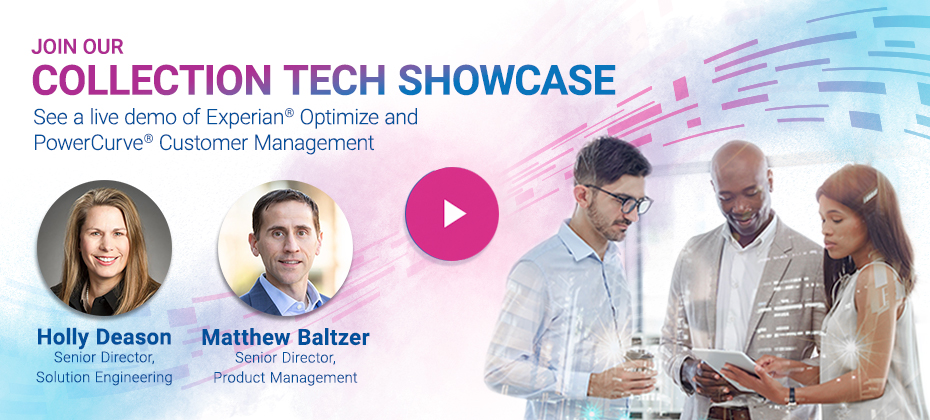Tag: Decisioning

Generative AI (GenAI) is transforming the financial services industry, driving innovation, efficiency and cost savings across various domains. By integrating GenAI into their operations, financial institutions can better respond to rapidly changing environments. GenAI is reshaping financial services from customer engagement to compliance, leading to streamlined operations and enhanced decision-making. The strategic role of GenAI in financial services Adopting GenAI in financial services is now a strategic imperative. A 2024 McKinsey report (The State of AI in 2024) notes more than a 10% revenue increase for companies using GenAI. As institutions strive to stay competitive, GenAI provides powerful tools to enhance customer experiences, optimize operations, accelerate regulatory compliance, and expedite coding and software development. Key areas where GenAI is making an impact Enhanced customer engagement Financial institutions use GenAI to offer personalized products and services. By analyzing real-time customer data, GenAI enables tailored recommendations, boosting satisfaction and retention. Streamlining and optimizing operations GenAI automates tasks like data entry and transaction monitoring, freeing up resources for strategic activities. This accelerates workflows and reduces errors. Further, GenAI-driven efficiency directly cuts costs. By automating processes and optimizing resources, institutions can lower overhead and invest more in innovation. Deloitte’s Q2 2024 study found AI automation reduced processing times by up to 60% and operational costs by 25%. Accelerating regulatory compliance GenAI simplifies compliance by automating data collection, analysis and reporting. This ensures regulatory adherence while minimizing risks and penalties. According to a 2024 Thomson Reuters survey, AI-driven compliance reduced reporting times by 40% and costs by 15%. Developer coding support for efficiencies GenAI is an invaluable tool for programmers. It aids in code generation, task automation and debugging, boosting development speed and allowing focus on innovation. Gartner’s 2024 research highlights a 30% improvement in coding efficiency and a 25% reduction in development timeframes due to GenAI. Accelerating credit analytics with Experian Assistant Within the credit risk management space, GenAI offers a powerful solution that addresses some known pain points. These relate to mining vast amounts of data for insight generation and coding support for attribute selection and creation, model development, and expedited deployment. Experian Assistant is a game-changer in modernizing analytics workflows across the data science lifecycle. Integrated into the Experian Ascend™ platform, it’s specifically designed for analytics and data science teams to tackle the challenges of data analysis, model deployment and operational efficiency head-on. Capabilities and skills of Experian Assistant Data tutor: Offers comprehensive insights into Experian’s data assets, enabling users to make informed decisions and optimize workflows Analytics expert: Provides tailored recommendations for various use cases, helping users identify the most predictive metrics and enhance model accuracy Code advisor (data prep): Automatically generates code for tasks like data merging and sampling, streamlining the data preparation process Code advisor (analysis): Generates code for risk analytics and modeling tasks, including scorecard development and regulatory analyses Tech specialist: Facilitates model deployment and documentation, minimizing delays and ensuring a seamless transition from development to production Driving more-informed decisions Adopting GenAI will be key to maintaining competitiveness as the financial services industry evolves. With projections showing significant growth in GenAI investments by 2025, the potential for enhanced efficiencies, streamlined operations and cost savings is immense. Experian Assistant is at the forefront of this transformation, addressing the bottlenecks that slow down analytical processes and enabling financial institutions to move faster, more informed and with greater precision. By integrating the capabilities of the Experian Assistant, financial institutions can leverage GenAI in credit risk management, automate data processes, and develop customized analytics for business decision-making. This alignment with GenAI’s broader benefits—like operational streamlining and improved customer experience—ensures better risk identification, workflow optimization, and more informed decisions. To learn more about how Experian Assistant can transform your data analytics capabilities, watch our recent tech showcase and book a demo with your local Experian sales team. Watch tech showcase Learn more

In this article...What is reject inference? How can reject inference enhance underwriting? Techniques in reject inference Enhancing reject inference design for better classification How Experian can assist with reject inference In the lending world, making precise underwriting decisions is key to minimizing risks and optimizing returns. One valuable yet often overlooked technique that can significantly enhance your credit underwriting process is reject inferencing. This blog post offers insights into what reject inference is, how it can improve underwriting, and various reject inference methods. What is reject inference? Reject inference is a statistical method used to predict the potential performance of applicants who were rejected for a loan or credit — or approved but did not book. In essence, it helps lenders and financial institutions gauge how rejected or non-booked applicants might have performed had they been accepted or booked. By incorporating reject inference, you gain a more comprehensive view of the applicant pool, which leads to more informed underwriting decisions. Utilizing reject inference helps reduce biases in your models, as decisions are based on a complete set of data, including those who were initially rejected. This technique is crucial for refining credit risk models, leading to more accurate predictions and improved financial outcomes. How can reject inference enhance underwriting? Incorporating reject inference into your underwriting process offers several advantages: Identifying high-potential customers: By understanding the potential behavior of rejected applicants, you can uncover high-potential customers who might have been overlooked before. Improved risk assessment: Considering the full spectrum of applicants provides a clearer picture of the overall risk landscape, allowing for more informed lending decisions. This can help reduce default rates and enhance portfolio performance. Optimizing credit decisioning models: Including inferred data from rejected and non-booked applicants makes your credit scoring models more representative of the entire applicant population. This results in more robust and reliable predictions. Techniques in reject inference Several techniques are employed in reject inference, each with unique strengths and applications. Understanding these techniques is crucial for effectively implementing reject inference in your underwriting process. Let's discuss three commonly used techniques: Parceling: This technique involves segmenting rejected applicants based on their characteristics and behaviors, creating a more detailed view of the applicant pool for more precise predictions. Augmentation: This method adds inferred data to the dataset of approved applicants, producing a more comprehensive model that includes both approved and inferred rejected applicants, leading to better predictions. Reweighting: This technique adjusts the weights of approved applicants to reflect the characteristics of rejected applicants, minimizing bias towards the approved applicants and improving prediction accuracy. Pre-diction method The pre-diction method is a common approach in reject inference that uses data collected at the time of application to predict the performance of rejected applicants. The advantage of this method is its reliance on real-time data, making it highly relevant and current. For example, pre-diction data can include credit bureau attributes from the time of application. This method helps develop a model that predicts the outcomes of rejected applicants based on performance data from approved applicants. However, it may not capture long-term trends and could be less effective for applicants with unique characteristics. Post-diction method The post-diction method uses data collected after the performance window to predict the performance of rejected applicants. Leveraging historical data, this method is ideal for capturing long-term trends and behaviors. Post-diction data may include credit bureau attributes from the end of the performance window. This method helps develop a model based on historical performance data, which is beneficial for applicants with unique characteristics and can lead to higher performance metrics. However, it may be less timely and require more complex data processing compared to pre-diction. Enhancing reject inference design for better classification To optimize your reject inference design, focus on creating a model that accurately classifies the performance of rejected and non-booked applicants. Utilize a combination of pre-diction and post-diction data to capture both real-time and historical trends. Start by developing a parceling model using pre-diction data, such as credit bureau attributes from the time of application, to predict rejected applicants' outcomes. Regularly update your model with the latest data to maintain its relevance. Next, incorporate post-diction data, including attributes from the end of the performance window, to capture long-term trends. Combining both data types will result in a more comprehensive model. Consider leveraging advanced analytics techniques like machine learning and artificial intelligence to refine your model further, identifying hidden patterns and relationships for more accurate predictions. How Experian can assist with reject inference Reject inference is a powerful tool for enhancing your underwriting process. By predicting the potential performance of rejected and non-booked applicants, you can make more inclusive and accurate decisions, leading to improved risk assessment and optimized credit scoring models. Experian offers various services and solutions to help financial institutions and lenders effectively implement reject inference into their decisioning strategy. Our solutions include comprehensive and high-quality datasets, which empower you to build models that are more representative of the entire applicant population. Additionally, our advanced analytics tools simplify data analysis and model development, enabling you to implement reject inference efficiently without extensive technical expertise. Ready to elevate your underwriting process? Contact us today to learn more about our suite of advanced analytics solutions or hear what our experts have to say in this webinar. Watch Webinar Learn More This article includes content created by an AI language model and is intended to provide general information.

Experian’s award-winning platform now brings together market-leading data, generative AI and cutting-edge machine learning solutions for analytics, credit decisioning and fraud into a single interface — simplifying the deployment of analytical models and enabling businesses to optimize their practices. The platform updates represent a notable milestone, fueled by Experian’s significant investments in innovation over the last eight years as part of its modern cloud transformation. “The evolution of our platform reaffirms our commitment to drive innovation and empower businesses to thrive. Its capabilities are unmatched and represent a significant leap forward in lending technology, democratizing access to data in compliant ways while enabling lenders of all sizes to seamlessly validate their customers’ identities with confidence, help expand fair access to credit and offer awesome user and customer experiences,” said Alex Lintner CEO Experian Software Solutions. The enhanced Experian Ascend Platform dramatically reduces time to install and offers streamlined access to many of Experian's award-winning integrated solutions and tools through a single sign-on and a user-friendly dashboard. Leveraging generative AI, the platform makes it easy for organizations of varying sizes and experience levels to pivot between applications, automate processes, modernize operations and drive efficiency. In addition, existing clients can easily add new capabilities through the platform to enhance business outcomes. Read Press Release Learn More Check out Experian Ascend Platform in the media: Transforming Software for Credit, Fraud and Analytics with Experian Ascend Platform™ (Episode 160) Reshaping the Future of Financial Services with Experian Ascend Platform Introducing Experian’s Cloud-based Ascend Technology Platform with GenAI Integration 7 enhancements of Experian Ascend Platform

This article was updated on March 12, 2024. The number of decisions that a business must make in the marketing space is on the rise. Which audience to target, what is the best method of communication, which marketing campaign should they receive? To stay ahead, a growing number of businesses are embracing artificial intelligence (AI) analytics, machine learning, and mathematical optimization in their decisioning models and strategies. What is an optimization model? While machine learning models provide predictive insights, it’s the mathematical optimization models that provide actionable insights that drive decisioning. Optimization models factor in multiple constraints and goals to leave you with the next best steps. Each step in the optimization process can significantly improve the overall impact of your marketing outreach — for both you and your customers. Using a mathematical optimization software, you can enhance your targeting, increase response rates, lower cost per acquisition, and drive engagement. Better engagement can lead to stronger business performance and profitability. Here are a few key areas where machine learning and optimization modeling can help increase your return on investment (ROI): Prospecting: Advanced analytics and optimization can be used to better identify individuals who meet your credit criteria and are most likely to respond to your offers. Taking this customer-focused approach, you can provide the most relevant marketing messages to customers at the right time and place. Cross-sell and upsell: The same optimized targeting can be applied to increase profitability with your existing customer base in cross-sell and up-sell opportunities. Gain insights into the best offer to send to each customer, the best time to send it, and which channel the customer will respond best to. Additionally, implement logic that maintains your customer contact protocols. Retention: Employing optimization modeling in the retention stage helps you make quicker decisions in a competitive environment. Instantly identify triggers that warrant a retention offer and determine the likelihood of the customer responding to different offers. LEARN MORE: eBook: Debunking the top 5 myths about optimization Gaining insight and strengthening decisions with our solutions Experian’s suite of advanced analytics solutions, including our optimization software, can help improve your marketing strategies. Use our ROI calculator to get a personalized estimate of how optimization can lift your campaigns without additional marketing spend. Start by inputting your organization’s details below. initIframe('62e81cb25d4dbf17c7dfea55'); Learn more about how optimization modeling can help you achieve your marketing and growth goals. Learn more

Join us as we dive into the world of decisioning and optimization during our upcoming tech showcase, where we’ll be demoing our innovative debt management solutions, Experian® Optimize and PowerCurve® Customer Management. Discover how you can leverage these tools to not only increase profitability but also improve your operational efficiency. We'll show you how our debt collection solutions can enable you to: Turn insight into action with a more holistic consumer view. Increase right-party contact with the best channel and time. Reduce bad debt levels and manage overall exposure. Leading this tech showcase will be Experian’s Matthew Baltzer, Senior Director of Collections Product Management, and Holly Deason, Senior Director of Solution Engineering. Watch on-demand

The science of turning historical data into actionable insights is far from magic. And while organizations have successfully used predictive analytics for years, we're in the midst of a transformation. New tools, vast amounts of data, enhanced computing power and decreasing implementation costs are making predictive analytics increasingly accessible. And business leaders from varying industries and functions can now use the outcomes to make strategic decisions and manage risk. What is predictive analytics? Predictive analytics is a type of data analytics that uses statistical modeling and machine learning techniques to make predictions based on historical data. Organizations can use predictive analytics to predict risks, needs and outcomes. You might use predictive analytics to make an immediate decision. For example, whether or not to approve a new credit application based on a credit score — the output from a predictive credit risk model. But organizations can also use predictive analytics to make long-term decisions, such as how much inventory to order or staff to hire based on expected demand. How can predictive business analytics help a business succeed? Businesses can use predictive analytics in different parts of their organizations to answer common and critical questions. These include forecasting market trends, inventory and staffing needs, sales and risk. With a wide range of potential applications, it’s no surprise that organizations across industries and functions are using predictive analytics to inform their decisions. Here are a few examples of how predictive analytics can be helpful: Financial services: Financial institutions can use predictive analytics to assess credit risk, detect fraudulent applicants or transactions, cross-sell customers and limit losses during recovery. Healthcare: Using data from health records and medical devices, predictive models can predict patient outcomes or identify patients who need critical care. Manufacturing: An organization can use models to predict when machines need to be turned off or repaired to improve their longevity and avoid accidents. Retail: Brick-and-mortar retailers might use predictive analytics when deciding where to expand, what to cross-sell loyalty program members and how to improve pricing. Hospitality: A large hospitality group might predict future reservations to help determine how much staff they need to hire or schedule. Advanced techniques in predictive modeling for financial services Emerging technologies, particularly AI and machine learning (ML), are revolutionizing predictive modeling in the financial sector by providing more accurate, faster and more nuanced insights. Taking a closer look at financial services, consider how an organization might use predictive credit analytics and credit risk scores across the customer lifecycle. Marketing: Segment consumers to run targeted marketing campaigns and send prescreened credit offers to the people who are most likely to respond. AI models can analyze customer data to offer personalized offers and product recommendations. Underwriting: AI technologies enable real-time data analysis, which is critical for underwriting. The outputs from credit risk models can help you to quickly approve, deny or send applications for manual review. Explainable machine learning models may be able to expand automation and outperform predictive models built with older techniques by 10 to 15 percent.1 Fraud detection models can also raise red flags based on suspicious information or behaviors. Account management: Manage portfolios and improve customer retention, experience and lifetime value. The outputs can help you determine when you should adjust credit lines and interest rates or extend offers to existing customers. AI can automate complex decision-making processes by learning from historical data, reducing the need for human intervention and minimizing human error. Collections: Optimize and automate collections based on models' predictions about consumers' propensity to pay and expected recovery amounts. ML models, which are capable of processing vast amounts of unstructured data, can uncover complex patterns that traditional models might miss. Although some businesses can use unsupervised or “black box" models, regulations may limit how financial institutions can use predictive analytics to make lending decisions. Fortunately, there are ways to use advanced analytics, including AI and ML, to improve performance with fully compliant and explainable credit risk models and scores. WHITE PAPER: Getting AI-driven decisioning right in financial services Developing predictive analytics models Going from historical data to actionable analytics insights can be a long journey. And if you're making major decisions based on a model's predictions, you need to be confident that there aren’t any missteps along the way. Internal and external data scientists can oversee the process of developing, testing and implementing predictive analytics models: Define your goal: Determine the predictions you want to make or problems you want to solve given the constraints you must act within. Collect data: Identify internal and external data sources that house information that could be potentially relevant to your goal. Prepare the data: Clean the data to prepare it for analysis by removing errors or outliers and determining if more data will be helpful. Develop and validate models: Create predictive models based on your data, desired outcomes and regulatory requirements. Deciding which tools and techniques to use during model development is part of the art that goes into the science of predictive analytics. You can then validate models to confirm that they accurately predict outcomes. Deploy the models: Once a model is validated, deploy it into a live environment to start making predictions. Depending on your IT environment, business leaders may be able to easily access the outputs using a dashboard, app or website. Monitor results: Test and monitor the model to ensure it's continually meeting performance expectations. You may need to regularly retrain or redevelop models using training data that better reflects current conditions. Depending on your goals and resources, you may want to start with off-the-shelf predictive models that can offer immediate insights. But if your resources and experience allow, custom models may offer more insights. CASE STUDY: Experian worked with one of the largest retail credit card issuers to develop a custom acquisition model. The client's goal was to quickly replace their outdated custom model while complying with their model governance requirements. By using proprietary attribute sets and a patented advanced model development process, Experian built a model that offered 10 percent performance improvements across segments. Predictive modeling techniques Data scientists can use different modeling techniques when building predictive models, including: Regression analysis: A traditional approach that identifies the most important relationships between two or more variables. Decision trees: Tree-like diagrams show potential choices and their outcomes. Gradient-boosted trees: Builds on the output from individual decision trees to train more predictive trees by identifying and correcting errors. Random forest: Uses multiple decision trees that are built in parallel on slightly different subsets of the training data. Each tree will give an output, and the forest can analyze all of these outputs to determine the most likely result. Neural networks: Designed to mimic how the brain works to find underlying relationships between data points through repeated tests and pattern recognition. Support vector machines: A type of machine learning algorithm that can classify data into different groups and make predictions based on shared characteristics. Experienced data scientists may know which techniques will work well for specific business needs. However, developing and comparing several models using different techniques can help determine the best fit. Implementation challenges and solutions in predictive analytics Integrating predictive analytics into existing systems presents several challenges that range from technical hurdles to external scrutiny. Here are some common obstacles and practical solutions: Data integration and quality: Existing systems often comprise disparate data sources, including legacy systems that do not easily interact. Extracting high-quality data from these varied sources is a challenge due to inconsistent data formats and quality. Implementing robust data management practices, such as data warehousing and data governance frameworks, ensure data quality and consistency. The use of APIs can facilitate seamless data integration. Scalability: Predictive business analytics models that perform well in a controlled test environment may not scale effectively across the entire organization. They can suffer from performance issues when deployed on a larger scale due to increased data volumes and transaction rates. Invest in scalable infrastructure, such as cloud-based platforms that can dynamically adjust resources based on demand. Regulatory compliance: Financial institutions are heavily regulated, and any analytics tool must comply with existing laws — such as the Fair Credit Reporting Act in the U.S. — which govern data privacy and model transparency. Including explainable AI capabilities helps to ensure transparency and compliance in your predictive models. Compliance protocols should be regularly reviewed to align with both internal audits and external regulations. Expertise: Predictive analytics requires specialized knowledge in data science, machine learning and analytics. Develop in-house expertise through training and development programs or consider partnerships with analytics firms to bridge the gap. By addressing these challenges with thoughtful strategies, organizations can effectively integrate predictive analytics into their systems to enhance decision-making and gain a competitive advantage. From prediction to prescription While prediction analytics focuses on predicting what may happen, prescription analytics focuses on what you should do next. When combined, you can use the results to optimize decisions throughout your organization. But it all starts with good data and prediction models. Learn more about Experian's predictive modeling solutions. 1Experian (2020). Machine Learning Decisions in Milliseconds *This article includes content created by an AI language model and is intended to provide general information.

Machine learning (ML) is a powerful tool that can consume vast amounts of data to uncover patterns, learn from past behaviors, and predict future outcomes. By leveraging ML-powered credit risk models, lenders can better determine the likelihood that a consumer will default on a loan or credit obligation, allowing them to score applicants more accurately. When applied to credit decisioning, lenders can achieve a 25 percent reduction in exposure to risky customers and a 35 percent decrease in non-performing loans.1 While ML-driven models enable lenders to target the right audience and control credit losses, many organizations face challenges in developing and deploying these models. Some still rely on traditional lending models with limitations preventing them from making fast and accurate decisions, including slow reaction times, fewer data sources, and less predictive performance. With a trusted and experienced partner, financial institutions can create and deploy highly predictive ML models that optimize their credit decisioning. Case study: Increase customer acquisition with improved predictive performance Looking to meet growth goals without increasing risk, a consumer goods retailer sought out a modern and flexible solution that could help expand its finance product options. This meant replacing existing ML models with a custom model that offers greater transparency and predictive power. The retailer partnered with Experian to develop a transparent and explainable ML model. Based on the model’s improved predictive performance, transparency, and ability to derive adverse action reasons for declines, the retailer increased sales and application approval rates while reducing credit risk. Read the case study Learn about our custom modeling capabilities 1 Experian (2020). The Art of Decisioning in Uncertain Times

From chatbots to image generators, artificial intelligence (AI) has captured consumers' attention and spurred joy — and sometimes a little fear. It's not too different in the business world. There are amazing opportunities and lenders are increasingly turning to AI-driven lending decision engines and processes. But there are also open questions about how AI can work within existing regulatory requirements, how new regulations will impact its use and how to implement advanced analytics in a way that increases equitable inclusion rather than further embedding disparities. How are lenders using AI today? Many financial institutions have implemented — or at least tested — AI-driven tools throughout the customer lifecycle to: Target the right consumers: With tools like Ascend Intelligence ServicesTM Target (AIS Target), lenders can better identify consumers who match their credit criteria and send right-sized offers, which enables them to maximize their acceptance rates. Detect and prevent fraud: Fraud detection tools have used AI and machine learning techniques to detect and prevent fraud for years. These systems may be even more important as new fraud risks emerge, from tried-and-true methods to generative AI (GenAI) fraud. Assess creditworthiness: ML-based models can incorporate a range of internal and external data points to more precisely evaluate creditworthiness. When combined with traditional and alternative credit data*, some lenders can even see a Gini uplift of 60 to 70 percent compared to a traditional credit risk model. Manage portfolios: Lenders can also use a more complete picture of their current customers to make better decisions. For example, AI-driven models can help lenders set initial credit limits and suggest when a change could help them increase wallet share or reduce risk. Lenders can also use AI to help determine which up- and cross-selling offers to present and when (and how) to reach out. Improve collections: Models can be built to ease debt collection processes, such as choosing where to assign accounts, which accounts to prioritize and how to contact the consumer. Additionally, businesses can implement AI-powered tools to increase their organizations' productivity and agility. GenAI solutions like Experian Assistant accelerate the modeling lifecycle by providing immediate responses to questions, enhancing model transparency and parsing through multiple model iterations quickly, resulting in streamlined workflows, improved data visibility and reduced expenses. WATCH: Explore best practices for building, fine-tuning and deploying robust machine learning models for credit risk. The benefits of AI in lending Although lenders can use machine learning models in many ways, the primary drivers for adoption in underwriting include: Improving credit risk assessment Faster development and deployment cycles for new or recalibrated models Unlocking the possibilities within large datasets Keeping up with competing lenders Some of the use cases for machine learning solutions have a direct impact on the bottom line — improving credit risk assessment can decrease charge-offs. Others are less direct but still meaningful. For instance, machine learning models might increase efficiency and allow further automation. This takes the pressure off your underwriting team, even when application volume is extremely high, and results in faster decisions for applicants, which can improve your customer experience. Incorporating large data sets into their decisions also allows lenders to expand their lending universe without taking on additional risk. For example, they may now be able to offer risk-appropriate credit lines to consumers that traditional scoring models can't score. And machine learning solutions can increase customer lifetime value when they're incorporated throughout the customer lifecycle by stopping fraud, improving retention, increasing up- or cross-selling and streamlining collections. Hurdles to adoption of machine learning in lending There are clear benefits and interest in machine learning and analytics, but adoption can be difficult, especially within credit underwriting. A recent Forrester Consulting study commissioned by Experian found that the top pain points for technology decision makers in financial services were reported to be automation and availability of data. Explainability comes down to transparency and trust. Financial institutions have to trust that machine learning models will continue to outperform traditional models to make them a worthwhile investment. The models also have to be transparent and explainable for financial institutions to meet regulatory fair lending requirements. A lack of resources and expertise could hinder model development and deployment. It can take a long time to build and deploy a custom model, and there's a lot of overhead to cover during the process. Large lenders might have in-house credit modeling teams that can take on the workload, but they also face barriers when integrating new models into legacy systems. Small- and mid-sized institutions may be more nimble, but they rarely have the in-house expertise to build or deploy models on their own. The models also have to be trained on appropriate data sets. Similar to model building and deployment, organizations might not have the human or financial resources to clean and organize internal data. And although vendors offer access to a lot of external data, sometimes sorting through and using the data requires a large commitment. How Experian is shaping the future of AI in lending Lenders are finding new ways to use AI throughout the customer lifecycle and with varying types of financial products. However, while the cost to create custom machine learning models is dropping, the complexities and unknowns are still too great for some lenders to manage. But that's changing. Experian built the Ascend Intelligence Services™ to help smaller and mid-market lenders access the most advanced analytics tools. The managed service platform can significantly reduce the cost and deployment time for lenders who want to incorporate AI-driven strategies and machine learning models into their lending process. The end-to-end managed analytics service gives lenders access to Experian's vast data sets and can incorporate internal data to build and seamlessly deploy custom machine learning models. The platform can also continually monitor and retrain models to increase lift, and there's no “black box" to obscure how the model works. Everything is fully explainable, and the platform bakes regulatory constraints into the data curation and model development to ensure lenders stay compliant. Learn more * When we refer to “Alternative Credit Data," this refers to the use of alternative data and its appropriate use in consumer credit lending decisions as regulated by the Fair Credit Reporting Act (FCRA). Hence, the term “Expanded FCRA Data" may also apply in this instance and both can be used interchangeably.

To drive profitable growth and customer retention in today’s highly competitive landscape, businesses must create long-term value for consumers, starting with their initial engagement. A successful onboarding experience would encourage 46% of consumers1 to increase their investments in a product or service. While many organizations have embraced digital transformation to meet evolving consumer demands, a truly exceptional onboarding experience requires a flexible, data-driven solution that ensures each step of customer acquisition in financial services is as quick, seamless, and cohesive as possible. Otherwise, financial institutions may risk losing potential customers to competitors that can offer a better experience. Here are some of the benefits of implementing a flexible, data-driven decisioning platform: Greater efficiency From processing a consumer’s application to verifying their identity, lenders have historically completed these tasks manually, which can add days, if not weeks, to the onboarding process. Not only does this negatively impact the customer experience, but it also takes resources away from other meaningful work. An agile decisioning platform can automate these tedious tasks and accelerate the customer onboarding process, leading to increased efficiency, improved productivity, and lower acquisition costs2. Reduced fraud and risk Onboarding customers quickly is just as important as ensuring fraudsters are stopped early in the process, especially with the rise of cybercrime. However, only 23% of consumers are very confident that companies are taking steps to secure them online. With a layered digital identity verification solution, financial institutions can validate and verify an applicant’s personal information in real time to identify legitimate customers, mitigate fraud, and pursue growth confidently. Increased acceptance rates Today’s consumers demand instant responses and easy experiences when engaging with businesses, and their expectations around onboarding are no different. Traditional processes that take longer and require heavy documentation, greater amounts of information, and continuous back and forth between parties often result in significant customer dropout. In fact, 40% of digital banking consumers3 abandon opening an account online due to lengthy applications. With a flexible solution powered by real-time data and cutting-edge technology, financial institutions can reduce this friction and drive credit decisions faster, leading to more approvals, improved profitability, and higher customer satisfaction. Having a proper customer onboarding strategy in place is crucial to achieving higher acceptance and retention rates. To learn about how Experian can help you optimize your customer acquisition strategy, visit us and be sure to check out our latest infographic. View infographic Visit us 1 The Manifest, Customer Onboarding Strategy: A Guide to Retain Customers, April 2021. 2 Deloitte, Inside magazine issue 16, 2017. 3 The Financial Brand, How Banks Can Increase Their New Loan Business 100%, 2021.

In today’s evolving and competitive market, the stakes are high to deliver both quantity and quality. That is, to deliver growth goals while increasing customer satisfaction. OneAZ Credit Union is the second largest credit union in Arizona, serving over 157,000 members across 21 branches. Wanting to fund more loans faster and offer a better member experience through their existing loan origination system (LOS), OneAZ looked to improve their decisioning system and long-standing underwriting criteria. They partnered with Experian to create an automated underwriting strategy to meet their aggressive approval rate and loss rate goals. By implementing an integrated decisioning system, OneAZ had flexible access to data credit attributes and scores, resulting in increased automation through their existing LOS – meaning they didn’t have to completely overhaul their decisioning systems. Additionally, they leveraged software that enabled champion/challenger strategies and the flexibility to manage their decision criteria. Within one month of implementation, OneAZ saw a 26% increase in loan funding rates and a 25% decrease in manual reviews. They can now pivot quickly to respond to continuously evolving conditions. “The speed at which we can return a decision and our better understanding of future performance has really propelled us in being able to better serve our members,” said John Schooner, VP Credit Risk Management at OneAZ. Read our case study for more insight on how automation and PowerCurve Originations Essentials can move the needle for your organization, including: Streamlined strategy development and execution to minimize costly customizations and coding Comprehensive data assets across multiple sources to ensure ID verification and a holistic view of your prospect Proactive monitoring and real-time visibility to challenge and rapidly adjust strategies as needed Download the full case study

Shri Santhanam, Executive Vice President and General Manager of Global Analytics and Artificial Intelligence (AI) was recently featured on Lendit’s ‘Fintech One-on-One’ podcast. Shri and podcast creator, Peter Renton, discussed advanced analytics and AI’s role in lending and how Experian is helping lenders during what he calls the ‘digital lending revolution.’ Digital lending revolution “Over the last decade and a half, the notion of digital tools, decisioning, analytics and underwriting has come into play. The COVID-19 pandemic has dramatically accelerated that, and we’re seeing three big trends shake up the financial services industry,” said Shri. A shift in consumer expectations More than ever before, there is a deep focus on the customer experience. Five or six years ago, consumers and businesses were more accepting of waiting several days, sometimes even weeks, for loan approvals and decisions. However, the expectation has dramatically changed. In today’s digital world, consumers expect lending institutions to make quick approvals and real-time decisions. Fintechs being quick to act Fintech lenders have been disrupting the traditional financial services space in ways that positively impacts consumers. They’ve made it easier for borrowers to access credit – particularly those who have been traditional excluded or denied – and are quick to identify, develop and distribute market solutions. An increased adoption of machine learning, advanced analytics and AI Fintechs and financial institutions of all sizes are further exploring using AI-powered solutions to unlock growth and improve operational efficiencies. AI-driven strategies, which were once a ‘nice-to-have,’ have become a necessity. To help organizations reduce the resources and costs associated with building in-house models, Experian has launched Ascend Intelligence Services™, an analytics solution delivered on a modern tech AI platform. Ascend Intelligence Services helps streamline model builds and increases decision automation and approval rates. The future of lending: will all lending be done via AI, and what will it take to get there? According to Shri, lending in AI is inevitable. The biggest challenge the lending industry may face is trust in advanced analytics and AI decisioning to ensure lending is fair and transparent. Can AI-based lending help solve for biases in credit decisioning? We believe so, with the right frameworks and rules in place. Want to learn more? Explore our fintech solutions or click below. Listen to Podcast Learn more about Ascend Intelligence Services

For credit unions of all sizes, choosing a strategic partner with the right tools, capabilities, and industry expertise to support growth while minimizing expenses is a decision critical to the bottom line. This is especially important, since the goal of achieving sustainable growth has continued to be a trending topic for credit unions since the start of the pandemic. According to this CU Times analysis of NCUA data, the fourth quarter of 2020 showed that high overhead per assets was the main factor holding down net income, and credit unions with less than $1 billion in assets fared the worst. These high overhead costs kept margins low and served to be a key contributing factor in gauging a credit union’s profitability. Overcoming this problem lies not only in improving operational efficiency, but in seeking out partners that can provide innovative insight and “right-sized,” scalable solutions to help credit unions effectively grow at a strategic pace. The less money a credit union spends earning each dollar, the more operationally efficient and resource-savvy it becomes—which in turn generates more value for both the credit union and its members. So how can a credit union successfully assess a potential partner’s ability to help them achieve goals for sustainable growth? Asking three key questions can reveal a potential partner’s operational prowess and their ability to understand and offer the right solutions tailored for an individual credit union’s need. Minimize Overhead with a Partner Who Can Help Accelerate and Support Sustainable Growth: Evaluation Questions to Ask 1. Does my potential partner offer solutions to ease the strain on staff, or help automate time-consuming, repetitive tasks and processes? Automation is not only for large credit unions. Employees at credit unions with $4 billion and less in assets often wear many hats and manage the full spectrum of credit activities, leaving leaders to ponder how much time staff is spending on rote, manual tasks throughout the end-to-end member lifecycle. As a result, credit unions are turning to automated decisioning to streamline repetitive tasks and meet increasing member expectations, while also reducing risk. To drive sustainable growth, credit unions will want to look at current processes as a means of measuring efficiency. Can existing programs handle growth to scale in all areas of the business? How can digital lending automation be increased and free up more time for staff to focus attention where it is needed most, such as high-value engagements with members and delivering a personalized member experience? Can self-service tools save your credit union valuable time and increase employee satisfaction? 2. Does my potential partner have access to the right data, advanced analytics and technology to help optimize credit decisioning? As credit unions consider different ways to minimize overhead and accelerate growth, the last few years have shown that automation, coupled with advanced analytics and technology, has taken on a second wave of focus and intense interest. A significant opportunity pertaining to automation is supporting decisioning throughout the member lifecycle, again, eliminating the need for manual processes that cannibalize time and resources. For example, access to advanced analytics and data at the onset of account acquisition can quickly inform a lender as to whether a new account should be approved or declined. Furthermore, it also presents an opportunity to lend deeper. Credit unions can leverage expanded datasets to perform an analysis on rejected applicants and make more predictive decisions – leading to incremental loans. Additionally, lenders have identified other areas where automated decisioning could speed up processes that once required manual evaluation – from account and portfolio management, to marketing and prescreening efforts, to managing early and late-stage delinquent accounts. By leveraging a partner who can support optimizing credit decisioning with the freshest data and analytics, credit unions can routinely and consistently be sure they’re making the right offers and decisions to the right customer at the right time. 3. Does my potential partner offer digital-first strategies and solutions that help reduce friction and improve the member experience? More and more members are interacting and engaging with their credit unions via digital channels. To meet their demands, credit unions – who have historically prioritized other initiatives over digital transformation– are quickly pivoting and rethinking their digital strategy to offer best-in-class digital banking and borrowing experiences, while also reducing friction. Part of this strategy includes smart, easy and well-designed applications that support sustainable growth simply by streamlining offers and reducing abandonment. When considering a potential partner, take into consideration their ability to assist with digital-first solutions, including: Real-time income and employment verification, and fraud tools to quickly and accurately confirm important factors, including the legitimacy of members, and streamline the borrowing process with minimal friction. Instant prescreen, self-service prequalification and instant credit to offer fast, easy, and convenient real-time credit decisions for members. Additionally, improving lending economics with a digital-first pre-qualification tool can not only better serve members, but also drive more apps and grow loans. Artificial intelligence, machine learning and other innovative technologies to enhance underwriting and decrease both hard inquiries on applications and the need for extensive underwriter review. Prequalification tools powered by innovative technology solutions can lead to efficient use of underwriter resources and act as a filter in front of the LOS to remove unqualified applications from hard inquiries. Technology that integrates with multiple lending and core systems and delivers solutions that integrate with multiple systems and channels. For example, to help improve conversion, the borrower experience can be offered a simple application that is designed to “get to offer” as fast as possible. This helps reduce abandonment. The process can be further streamlined by integrating data sources for ID verification, auto fill assistance and adding integrations with existing lending and core systems. To learn more about Experian and how our solutions can support and grow your credit union, contact us now. Contact Us

At some point a lender may need to issue an RFI or an RFP for a credit decisioning system. In this latest installment of “working with vendors” let’s dive into some best practices for writing RFIs and RFPs that will help you more quickly and efficiently understand the capabilities of a vendor. First, have one person (or at most a very small group) review the document before it goes out to vendors. Too often these kinds of documents seem like they’re just cut and pasted together without any concern if they paint a coherent picture. If it’s worth the time to write an RFI/RFP, then it’s worth the time to get it right so that the vendor responses make sense. If your document paints an inconsistent picture, a vendor may not know what products will best serve your requirements. In turn, precious time will be wasted in discussions around what’s being proposed. Here are some things to make clear in the document: For what part of the credit life cycle does this RFI/RFP apply (prospecting, origination, account management or collections)? If the request covers more than one part of the life cycle, make clear which questions apply to which part of the life cycle. Do you need a system that processes in batch or real-time requests (or both)? For example, a credit card account management solution can process accounts in batch (for proactive line management), in real time (for reactive requests) or possibly even both. Let the vendor know what it is you’re trying to do, as there may be different systems involved in processing these requests. Do you want this system hosted at the vendor, a third party (like AWS, Azure, etc.) or installed on premises? If you have a preference, let the vendor know. If you have no preference, ask the vendor what they can support. In general, consider playing down or skip detailed pricing questions. There’s nothing wrong with asking for a price range. For credit decisioning systems, detailed pricing is difficult for the vendor since there are often high levels of unknown customization to do. A better question might be, “What things will the vendor have to know in order to accurately price the solution? What are the logical next steps to get more accurate pricing? What’s the typical range of pricing in a solution such as this and what drives that range?” Will you be acting as an aggregator? Sometimes systems are created as front ends to several lenders. For example, a client may want to create a website where a borrower can “shop” among several lenders. This is certainly doable but carries with it a whole host of legal, compliance, business and technical questions. In my opinion, I’d skip the RFI/RFP in this situation and have a robust sit down directly with the vendors. This option will likely be far more productive. Ask more open-ended questions. “How does the solution perform task X?” as opposed to, “Do you support Y?” Often, there’s more than one way to accomplish a task. Asking more open-ended questions will yield a more comprehensive answer from the vendor rather than a simple yes or no response. It also gives you the opportunity to learn about the latest decisioning techniques. Be careful that you have not copied old RFP questions that are no longer relevant. I’ve had clients ask if we support Bernoulli Boxes (a mid-80s kind of floppy disk), or whether we support OS/2, etc. I’ve even had questions about supporting a particular printer. These kinds of questions are centered on the support of the operating system and not a particular vendor’s credit decisioning software. Instead of asking yes/no technology questions, ask for a typical sample architecture. Ask what kinds of APIs are supported (REST, SOAP/XML, etc.). Ask about the solution’s capabilities to call third-party systems (both internal and external). Ask fewer, but more in-depth questions. If the solution needs screens, be clear which screens you’re talking about. Do you need screens to make rule adjustments or configuration changes? Do you need screens for manual review or some sort of case management? Do you need consumer-facing screens where borrowers can type in their application data? If you need screens, be clear on the task the screens should perform. If you have particular concerns, ask them in an open-ended way. For example, “The solution will have to exchange file-based data with a mainframe. How can your solution best satisfy this requirement?” In general, state your requirement not the technology to use. A preamble or brief executive summary is useful to get the big picture across before the vendor delves into any questions. A paragraph or two can go a long way to help the vendor better assess your requirements and provide more meaningful answers to you. This works well because it’s easier to give the big picture in a few paragraphs as opposed to sprinkled around in multiple questions. To summarize, be clear on your requirements and provide a more open-ended format for the vendor to respond. This will save both you and the vendor a lot of time. In section three, I’ll cover evaluating vendors.

Digitalization, also known as the process of using digital technology to provide new opportunities for revenue and growth, continues to remain a top priority for many organizations in 2021. In fact, IDC predicts that by 2024, “over 50% of all IT spending will be directly for digital transformation and innovation (up from 31% in 2018).”[1] By combining data and analytics, companies can make better and more instant decisions, meet customer expectations, and automate for greater efficiency. Advances in AI and machine learning are just a few areas where companies are shifting their spend. Download our new white paper to take a deep dive into other ongoing analytics trends that seem likely to gain even greater traction in 2021. These trends will include: Increased digitalization – Data is a company’s most valuable asset. Companies will continue utilizing the information derived from data to make better data-driven decisions. AI for credit decisioning and personalized banking – Artificial intelligence will play a bigger role in the world of lending and financial services. By using AI and custom machine learning models, lending institutions will be able to create new opportunities for a wider range of consumers. Chatbots and virtual assistants – Because customers have come to expect excellent customer services, companies will increase their usage of chatbots and virtual assistants to facilitate conversations. Cloud computing – Flexible, scalable, and cost-effective. Many organizations have already seen the benefits of migrating to the cloud – and will continue their transition in the next few years. Biometrics – Physical and behavioral biometrics have been identified as the next big step for cybersecurity. By investing in these new technologies, companies can create seamless interactions with their consumers. Download Now [1] Gens, F., Whalen, M., Carnelley, P., Carvalho, L., Chen, G., Yesner, R., . . . Wester, J. (2019, October). IDC FutureScape: Worldwide IT Industry 2020 Predictions. Retrieved January 08, 2021, from https://www.idc.com/getdoc.jsp?containerId=US45599219

Perhaps your loan origination system (LOS) doesn’t have the flexibility that you require. Perhaps the rules editor can’t segment variables in the manner that you need. Perhaps your account management system can’t leverage the right data to make decisions. Or perhaps your existing system is getting sunset. These are just some of the many reasons a company may want to investigate the marketplace for new credit decisioning software. But RFIs and RFPs aren’t the only way to find new decisioning software. After working in credit services decisioning for over 20 years — and seeing hundreds of RFPs and presenting thousands of solutions and proposed architectures — I’ve formed a few opinions about how I would go about things if I were in the customer’s seat and have broken that into a three-part series. Part 1 will cover everything up to issuing an RFI or RFP. Part 2 will discuss writing an RFP or RFI. Part 3 will cover evaluating vendors. Let’s go. If you’re looking to buy new decisioning software, your first inclination might be to issue an RFI or an RFP. However, that may not be the best idea. Here’s an issue that I frequently see. Vendors are constantly evolving their products. How a product did feature X two years ago might be completely different now. The terminology that the industry uses might have changed, and new capabilities (like machine learning) might have come about and changed whole sets of functionalities. The first decision point is to ask yourself a question, “Do I know exactly what I want or am I trying to generally learn what is out there?” An RFI or RFP isn’t always the greatest way to exchange information about a product. From a vendor’s standpoint, a feature-rich, complex system has to be reduced down to a few text answers or (worst yet) a series of yes or no answers. It all boils down to nuance. On many occasions, I’ve faced a dilemma when answering an RFP question, “This question is unclear; if the customer means X, the answer is yes; if they mean Y, the answer is no.” If I were in a room with the customer, I could ask them the question, they could provide clarification and I could then provide the accurate answer. There would be more opportunity to have a back and forth, “Oh when you said X, this is what you meant ….” All of that back and forth is lost with an RFI or RFP, or at least delayed until the (hopefully selected) vendor gets a chance to present in front of a live audience. Also, consider that vendors are eager to educate you about their product. They know exactly how the product works and they’re happy to answer your questions. It’s perfectly reasonable to go to a vendor with prewritten questions and thoughts and to pose those questions during a call or demonstration with the vendor. Nothing would prevent a customer from using the same questions for each vendor and evaluating them based on their answers. All of this can be done without issuing an RFI or RFP. In conclusion, I’d offer the following points to think about before issuing an RFI or RFP: A customer can provide questions that they want answered during a demonstration of a credit decisioning product. These same questions can be used to provide an initial assessment of several vendors. A customer’s understanding of a vendor’s capabilities is likely 10x faster and deeper with an interactive session versus reading the answers in a questionnaire. Nuanced and follow-up questions can be asked to gather a complete understanding. Alternative solutions can be explored. This exercise doesn’t have to replace an RFP but instead can better inform the customer about the questions they need answered in order to issue an RFP. Don’t be afraid to talk to a vendor, even if you’re not sure what you want in a new product. In fact, talk to several vendors. More than likely, you’ll learn a lot more via a discussion than you will via an RFI questionnaire. What’s good about an RFI or RFP is coming in with prepared questions. That way, you can judge each vendor using the same criteria but, if possible, get the answers to those questions via an interactive session with the vendors. Next: How to write an effective RFP or RFI.